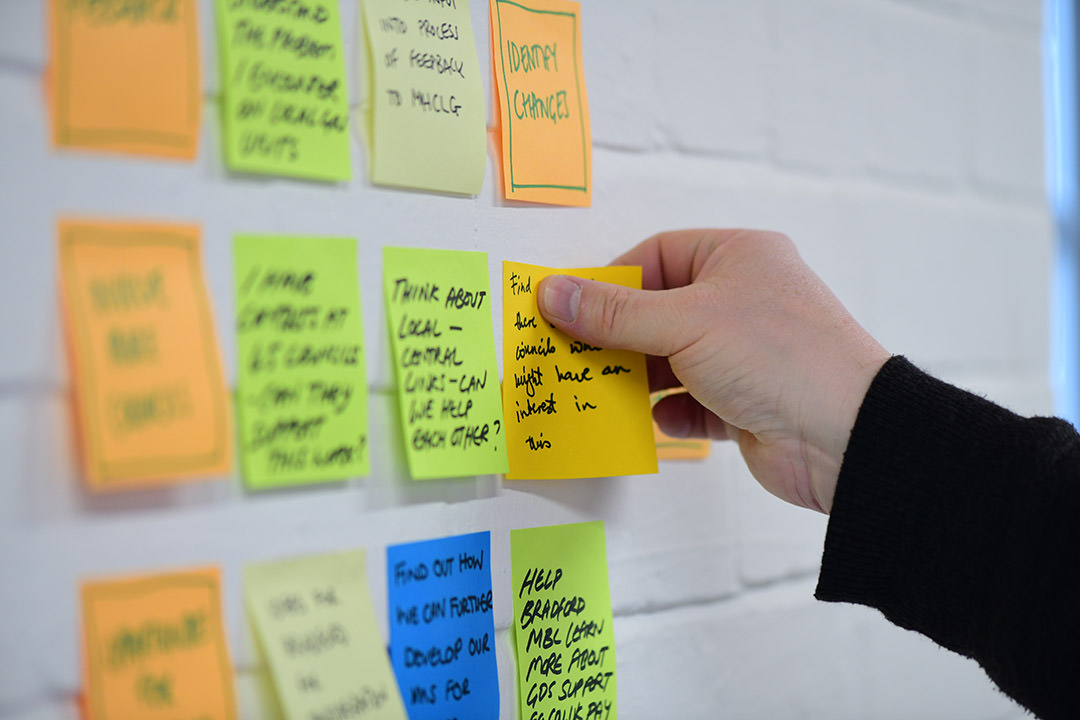Doing a pre-discovery to understand the priorities and goals of an organisation

From the start, we got a sense of urgency from MCA to transform quickly
At the beginning of the summer, we wrote about our work as a transformation partner with the Maritime and Coastguard Agency (MCA). We’ve shared below some of the things we’ve been doing together since we started.
Making sense of priorities and goals
When we started working together, there were very different ideas about what the organisation’s goals and priorities were.
To get some clarity, we combined research activities with workshop exercises like history mapping. That’s a technique that helps look at where the organisation has been, where they want to be, what critical events have been challenging or positive, and how they impact on the future.
We also spent some time exploring the work that MCA does. This included visiting one of the operations centres in Farham to see how search and rescue at sea and on the coast happens, and understand how operations teams do their day to day work.
We felt we didn’t know enough about the aims for different areas, and priorities for transformation, to go straight into a discovery. So we decided to do a pre-discovery to help us prepare for the discovery phase. We started the work with a very small team, a set budget, and 7 different areas to explore.
The pre-discovery phase
The pre-discovery focussed on understanding the contexts that MCA operates in and what it wants to achieve overall. From the start, we got a sense of urgency from MCA to transform quickly into an organisation for the digital age.
To make sure we offer value for money, we needed to prioritise what we will deliver. We used roadmapping workshops to help us do this. We worked with stakeholders from across the organisation to understand the competing priorities from multiple areas of work. We combined some of our questions for the discovery with these prioritisation exercises.
During these sessions, we also introduced and explained the discovery phase to stakeholders. We started by setting expectations and asking them how we could start user research with staff.
We then identified the following measures of success:
- a good quality discovery phase becomes the norm across MCA
- avoiding “failing” projects
- building confidence in the technology being used because it’s fit for purpose and meets user needs
- streamlined processes which allow operational areas to work together better
- increasing efficiency through better use of time and resources
- better data sharing across systems, for example, to help respond to emergency incidents better
- preparing for imminent changes in legislation like Brexit
- work is aligned to the overall strategic goals for MCA
Prioritising areas for discovery
The findings from our workshops, desk research, and one to one stakeholder interviews gave us the insights we needed to prioritise 2 areas of work:
- registering your beacon
- HM Coastguard website
We decided to start with the registering your beacon service because of the legislative changes affecting the service and the opportunity to streamline a process. We used this first discovery to introduce MCA to agile user centred practices and the GDS service standard, as it was new to most of the teams there.
Building a team with agile ways of working
We formed a joint multidisciplinary team, with MCA and dxw colleagues working together. We then worked with different business areas across MCA to establish collaborative ways of working. Things like weeknotes, show and tells, research playbacks, and ideas workshops. Our main contacts at MCA are the ICT central team, the individual areas of business, and the service owners for each of the areas.
Introducing user research to the organisation
We brought in dxw user researchers to speak to internal and external users of MCA systems. And we’ve been encouraging MCA teams to attend and contribute to research activities wherever possible.
Some of the research activities we worked on together included recruiting users for research and observational studies, as well as stakeholder interviews. The MCA beacons and ICT teams contributed to and shadowed some of these activities to give them a better idea of what user research involves.
Other things we did alongside the research included:
- explaining the benefits of user research
- introducing consent forms and all the other formalities required for running research
- starting a conversation about a data policy on how to share and store research
- demonstrating the skills, methods, and tools needed for user research
- introducing the GDS service standard phases
We’ve just completed the first discovery on registering your beacon. We’ll be blogging about it and our findings for the coast guard website discovery soon.
*featured image by Darren Hillman using Creative Commons License 2.0.